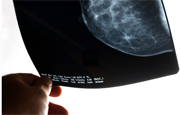
FRIDAY, Feb. 11 (HealthDay News) — The U.S. Food and Drug Administration approved on Friday the first X-ray mammography device that provides three-dimensional images of the breast for cancer screening and diagnosis.
The Selenia Dimensions System, an upgrade to Massachusetts-based Hologic Inc.’s FDA-approved two-dimensional system, can provide 2-D and 3-D X-ray images of the breasts. The 3-D images may help physicians more accurately detect and diagnose breast cancer, the FDA said in a news release.
“Physicians can now access this unique and innovative 3-D technology that could significantly enhance existing diagnosis and treatment approaches,” said Dr. Jeffrey Shuren, director of the FDA’s Center for Devices and Radiological Health.
A mammogram is a low-dose X-ray of the breast and is considered the best tool for early detection of breast cancer. But, with conventional two-dimensional imaging, an estimated 10 percent of women must endure additional testing because an initial screening exam found abnormalities that were later determined to be noncancerous, the agency said.
The combined use of the Selenia’s 2-D and 3-D images roughly doubled the amount of radiation a patient received. But, it improved accuracy, decreasing the number of women called back for additional testing, the FDA said. The agency added that there is uncertainty about radiation risk estimates. However, the increase in cancer risk from having both a 2-D and 3-D exam is expected to be less than 1.5 percent compared to the natural cancer incidence, and less than 1 percent compared to the risk from conventional 2-D mammography.
The U.S. National Cancer Institute recommends that women ages 40 and older have a mammogram every one to two years. Nearly 40 million mammograms are performed each year in the United States.
As part of the approval process, the FDA reviewed results from two studies where board-certified radiologists were asked to review two-dimensional and three-dimensional images from more than 300 mammography exams. In both studies, the radiologists viewing both the 2-D and 3-D images realized a 7 percent improvement in their ability to distinguish between cancerous and non-cancerous cases, compared to viewing 2-D images alone, the agency said.
According to the NCI, nearly 200,000 women will be diagnosed with breast cancer this year, and 1 in 8 women will face a diagnosis of breast cancer sometime during their lifetime. However, there is a 98 percent survival rate when breast cancer is detected early and still localized to the breast.
More information
To learn more about mammograms, visit the U.S. National Library of Medicine.

